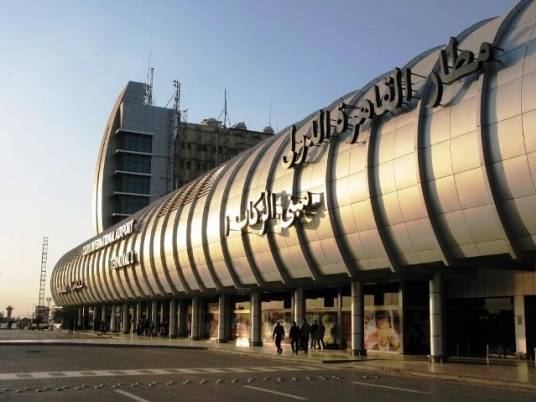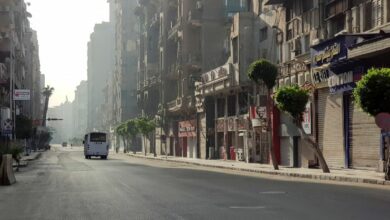One cannot say that most Egyptians sense a political crisis. However, large sectors of activists from across the political spectrum feel the existence of a crisis in Egypt’s political scene. That is why the presidential race is intensely competitive in a manner perhaps incommensurate with the importance of the election itself.
This article is an attempt to answer the following questions: What caused the crisis? How has the crisis developed in the past months? How has it been reflected in a general state of intense frustration?
The legitimacy crisis
It was not only the issue of hereditary transfer of power that caused Mubarak’s fall. In fact, the transfer of power was only a symptom of the deep rifts within the regime and its inability to rule, even within the framework of its institutions. The structure of power was no longer based on the existence of an oppressive center, but rather internal interactions determined by resources and influence under the umbrella of a police state that masks the struggle of interests of members of the former regime.
The opposition was not strong, but the regime was still unable to adopt a unified stance toward it — as it was clear during the revolution — by either responding to its demands or suppressing it to the end. Against this confused backdrop, the ruling Supreme Council of the Armed Forces was delegated presidential powers in an unconstitutional manner by the standards of the regime. The protesters of Tahrir elusively accepted this delegation.
This situation on its own revealed how much the legacy of Mubarak’s state was dwindling politically. Here was a revolution with no leadership, while the regime itself lacked any vision. At the same time, the biggest political organization, the Muslim Brotherhood, was trying to grasp all the political strings without a clear understanding of the dynamics of the revolution.
The Supreme Council of the Armed Forces
The SCAF has chosen to consider the uprising a “youth revolution” with certain demands but no desire to seize power and no ability beyond protesting. Hence, it was enough to partially satisfy those youth and keep the regime’s infrastructure intact as much as possible. It was therefore required to rebuild the old regime on the condition that the new president would not dominate or stay in power indefinitely. Having decided on this vision, the SCAF set itself against the revolutionaries.
But the problem is much deeper for the SCAF since the regime is, in fact, disintegrated. The dissolved National Democratic Party decayed completely, that being evident in the fact that its members were unable to pull themselves together and form one or two new parties.
The NDP split into seven or eight parties, and several of its members joined other political groupings. The results of the parliamentary elections proved beyond doubt that there was no hope for the old regime to build a new popular facade.
With the continuing conflicts and political crises, the regime lost its ability to act as one homogenous bloc. On one hand, cases of mutiny were reported among Central Security Forces conscripts and even policemen. And on the other, the Interior Ministry decided to stop acting as the regime’s sharp claws in political battles. After the clashes in Mohamed Mahmoud Street last November, the army had to advance to the forefront of the clashes and reveal its ugly face. In other words, the state’s security institutions were inclined to work professionally rather than listen to illegal orders to protect a certain party, because they were no longer guaranteed protection.
Attempts to revive the regime by issuing warnings of external foreign threats have also failed, as with the cases of foreign-funded NGOs and the attacks on the Israeli Embassy. They failed to create the necessary state of fear required to rebuild the police state.
As hatred for the ruling SCAF intensified, reaching its zenith on the first anniversary of the revolution, the junta became aware that it needed a settlement, and its ambitions shrunk to a desire to legitimize its control over the broader foreign policy and to retain military privileges in the civilian realm for the longest time possible.
But this plan would stir trouble, for the demarcations between internal and foreign policy and between civilian and military affairs are extremely hazy.
In short, the SCAF, whoever its members are, will continue to be a factor that causes unrest in the future, particularly since any negotiations with civilian parties will often lead to confrontation.
The first such encounter was with the Muslim Brotherhood, because it is a conservative group with little revolutionary ambition.
The Muslim Brotherhood
The Brotherhood constituted the largest organized power that operated outside the framework of the regime of Mubarak. Over the past 35 years, the Brotherhood has stepped up its game, using its organizational skills, preaching function and ability to bend with the wind and reach understandings with the security apparatus.
The Brotherhood's power can also be attributed to the fact that it used the same modus operandi of the old regime. Through clientelism, the Brotherhood, like the NDP, provided goods and services in exchange for political support. The Brotherhood’s social conservatism, of course, facilitated this political support. The Brotherhood thus succeeded in setting up networks that were able to compete with those of the old regime, which also had its web of services that replaced its appropriate political functions.
That ability to adapt its ways to match that of the regime has allowed it to grow in size, but has also led to the group’s clampdown at the hands of the regime for being its fierce competitor.
As a result of this synchronicity in the techniques between the Brotherhood and the regime, the latter adopted the regime’s dictatorial methods in the posts that its members held following the revolution. The Brotherhood, accordingly, had one foot in the revolution and the other in the counter-revolution camp. This split behavior began in the first 18 days of the revolution, when the Brotherhood embarked on negotiations with former intelligence chief Omar Suleiman and protested with the revolutionaries in the Battle of the Camel, for example.
These tactics, as contradictory as they are, seemed balanced to the Brotherhood. Its leaders were quick to accept sharing power with the regime through an understanding with the SCAF. The Brotherhood proceeded with its plan, reaping the gains. It abandoned the revolutionary camp and secured a majority in Parliament. The group also came close to controlling the process of constitution writing.
Eventually, the contradictions started to play out, and the Brotherhood clashed with the SCAF.
The problem lies in the fact that the Brotherhood ignored that its tactical gains were contingent on the revolution. Rather than being the result of its strength alone, its gains depended on its ability to represent the revolution, which empowered the group.
When the Brotherhood woke up to this conclusion and issued calls for unity, it had already lost credibility. Like the SCAF, the Brotherhood has paid for its organizational naivety and intellectual degeneration, which viewed the revolution as one that was carried out by a group of youth.
The Brotherhood was forced onto this path by a misreading of the lesson it had in 1954. More importantly, the Brotherhood imagined it could negotiate power sharing in the same way it negotiated its share of power in professional syndicates with State Security. Power sharing is a process that involves pressure and continuous confrontation. The more critical the institution is, the more difficult the negotiations become and the greater the need for political pressure.
Revolutionary political will was the factor the Brotherhood overlooked due to the conservative nature of its organization. The Brotherhood’s strategy to use the revolution — which the group abandoned quicker than when it joined it — to score points was an inappropriate strategy.
The years of fight and flight with Mubarak’s police regime following a honeymoon that extended into the mid-1990s caused the Brotherhood to be controlled by the more conservative and less politically mobile elements. The central idea was to preserve the integrity of the organization, and to make the system of obedience the most sacrosanct, excluding any reasoning that is not passed on or endorsed by the top leaders. This reasoning was paralleled by an understanding reached with sectors of the regime that would allow the Brotherhood partial integration in the political system without granting the group any real power.
After the breakout of the revolution, the problems facing this current within the Brotherhood exacerbated, putting the entire group in trouble. The emergence of several Islamist groups on the political scene and internal disagreements at the heart of the group — which became more salient because of the greater number of political options and the futility of the argument for unity in the face of suppression — fueled a crisis.
The more narrow-minded group kept the organization together by getting rid of all minds that were more open and ready to engage in dialogue about the future of the Brotherhood and its approach to politics.
The Brotherhood’s leadership has been keen to keep its Freedom and Justice Party merely as a “political arm” for the organization. In other words, the Brotherhood has insisted on maintaining the group as it was under the former regime — an entity that nurtures its members in a stereotypical fashion, which forms the basis of loyalty to the group.
With this fixation on loyalty, the Brotherhood became more like a sect that narrows down its circle of trust to preserve its internal coherence and expands its influence through the provision of services, like it did under the former regime. This sectarian organizational mindset retains the sectarian nature of everything connected to it, including its political arm, which is only an offshoot of the organization, much like a charity organization.
The Brotherhood has kept the same logic of operation adopted under the former regime and was able to pull the carpet from under revolutionary powers.
Revolutionary powers
The creativity and limitedness of these powers lies in the fact that they are a loose group of interconnected networks. As such, they lost power like a nation whose people have come from several places without any leadership, and thus it is difficult to siege or attack them. Still, those networks were dealt blows, and smear campaigns were launched against them to expand the scope of the so-called anti-revolution “couch party” — the reservoir of the regime.
Most of the participants in the revolution have convictions opposed to authoritarianism, and therefore their movement was free from ideological conflicts. They had primarily economic and social demands, in the face of socioeconomic discrepancies and increasing unemployment as well as demands for freedom in the face of an authoritative police state. This revolutionary bloc gradually acquired a civilian inclination emanating from a rejection of the confines of the authoritative Islamist current, and sometimes from a refusal of any organizational or ideological commitment.
It was members of these networks of revolutionaries who entered into bloody confrontations to isolate the Mubarak regime. Their frustration was not the result of these confrontations, which actually worked to ignite their enthusiasm, but rather from the steps taken by the SCAF and the Brotherhood to establish a political regime that mobilized apolitical sectors of the populace — the couch party — or the Islamist wave through public polls. The results of the parliamentary elections and the referendum on constitutional amendments were frustrating and bred varying levels of antagonism on the part of revolutionaries to poll-based politics.
At the heart of this bloc, frustration was at its highest among the well-to-do middle class, which has liberal inclinations centering on upholding human rights and personal freedoms, with varied leftist and radical hues. This bloc includes artists, intellectuals and well-educated citizens who work at modern international companies and activists at civilian organizations. It also includes groups of Copts whose primary drive to participate in the revolution was their preoccupation with the status of their community.
In the parliamentary elections, the rural countryside has taken revenge on the urban city, particularly greater Cairo and Giza. The success of their revenge revealed a structural defect in the avant-garde urban revolutionary leadership, which was unable to spread its influence in the peripheries or at least develop a discourse critical of the marginalization of the poorer classes.
Even parties that presented social programs were unable to implement their ideas. This bankruptcy led a large sector of the revolutionaries who subscribe to the idea of a civilian state to deepen the Islamist-liberal rift, which fed the impression that they were a minority seeking to defend their direct interests under the banner of the “civil state.”
Revolutionary powers, with all their problems, constitute the revolution’s spirit. In fact, their fragmentation and openness enables them to appear as representative of the entire nation, a feature, which other large protests staged by Islamists failed to demonstrate.
This bloc has oscillated between a desire to stop the process of institutionalization by calling for an election boycott or casting suspicions over their results and another to acquire the organizational strength of Islamist currents to produce a liberal or quasi-liberal sect, to offset the combined powers of the Brotherhood and Salafi-oriented Nour Party.
This revolutionary bloc is now fighting for its own destiny. Its members refused to be “hijacked” by any political organization, including those that were set up after the revolution. Due to their nature as a network, they could have more easily rallied around a certain icon, but even that would have not been possible because of their irregular nature.
But because of that very nature too, this network was able to represent the revolution, not only because the 18-day protests that ousted Mubarak took this irregular form, but also because independent sit-ins and strikes everywhere take this form, which reflects a youthful spirit that operates outside organizational and ideological givens.
The spirit of the revolution is the rejection of tyranny and the insistence on individual freedoms.
These revolutionary powers have not lost their impact, but their strength has been dispersed due to the fact that their enemies determine their nature. The lead-up to the election and other developments have revealed the diversity of the political scene, and hence the diversity of the enemies of the revolution.
The revolutionary bloc represents the chief threat to all settlements that are reached on a conservative basis, for its members are able to rally again in the face of authority or expose holes in the structure of the former regime.
It can be said therefore that we have a tottering authority represented by the old regime with suspended legislation and a loose grip on positions of power and public affairs. And the chief opposition camp, represented by Islamists, is also decaying and losing sense of direction, although more slowly. The fragmentation and diversity of revolutionary powers is the overriding feature of this era that provides momentum for the destruction of the structure of the old regime and its logic of operation.
This situation can be described as a political vacuum. But it can also be seen as a healthy situation since the old regime has proven that it is politically bankrupt and organized powers have demonstrated their incapacity to forge alliances and make workable deals.
Mubarak’s regime was not simply a parliament, presidency and a set of supreme courts, it also had a large web of interlocking interests and a position on world politics, along with a mindset of repression to the state combined with maneuvers to achieve partial or personal interests.
This regime entrenched a decaying tyrannical authority at homes, workplaces, recreational areas and state institutions. This is what kept the old regime alive. But even that legacy is eroding due to the activities carried out by revolutionary webs that penetrate all walks of life.
The battle between the revolutionary and counter-revolutionary forces will continue for years. Each camp has its own sets of weaknesses because both lack the necessary ideological and political strength to gain dominance.
Translated by Dina Zafer




